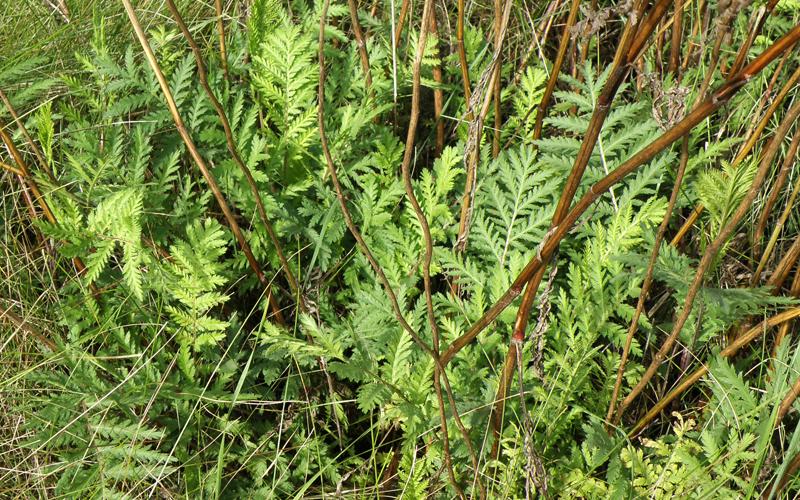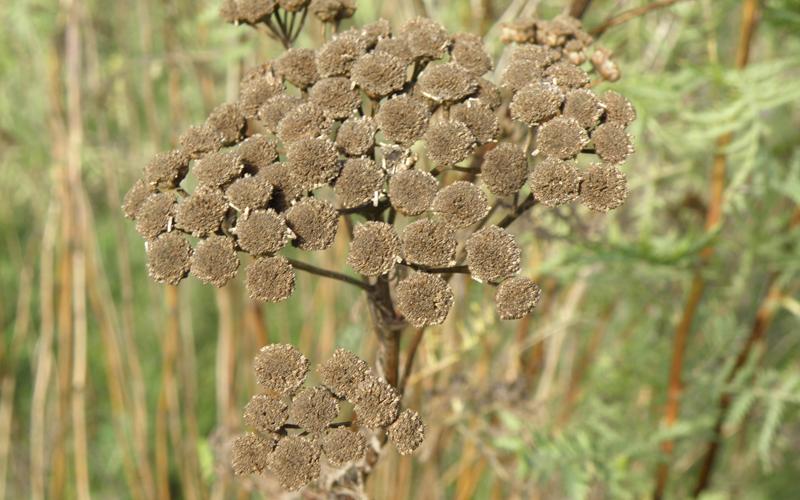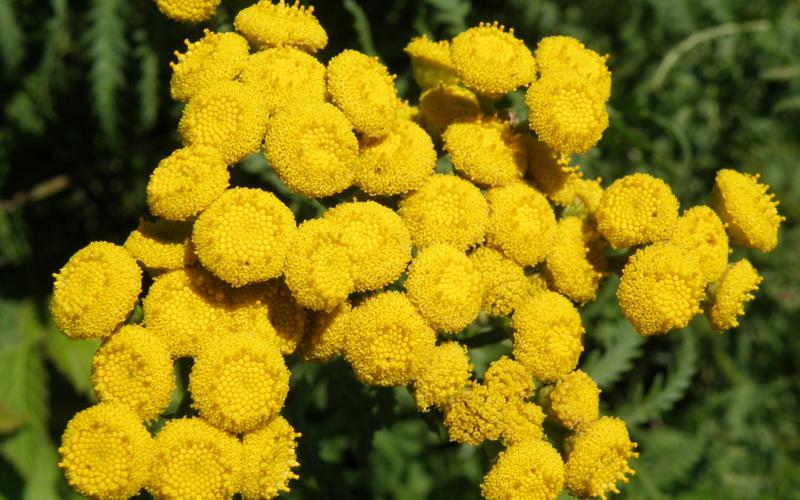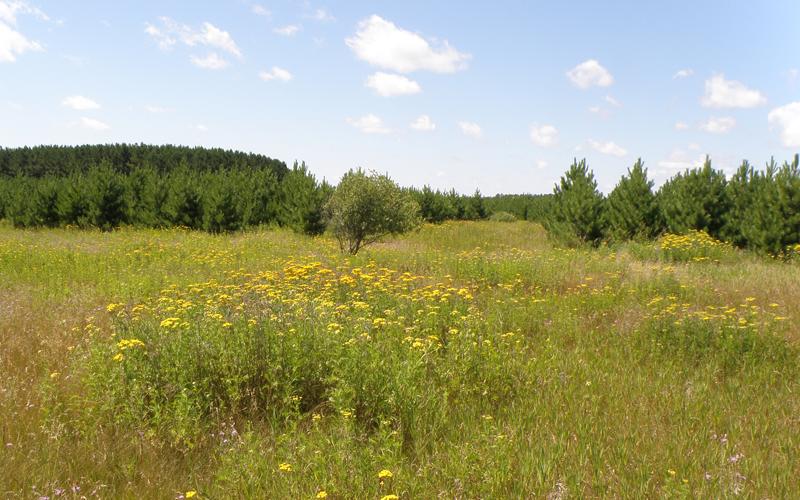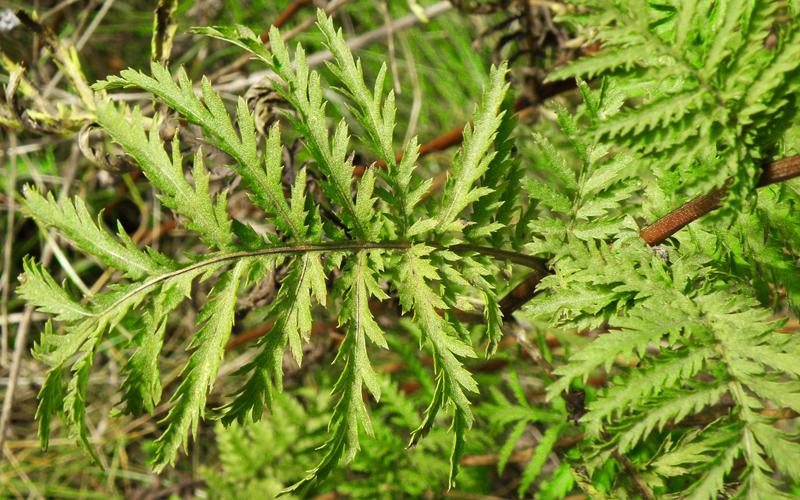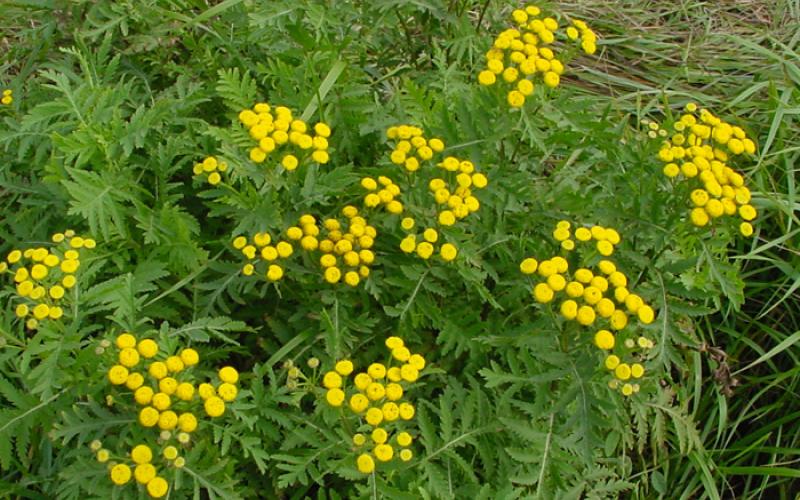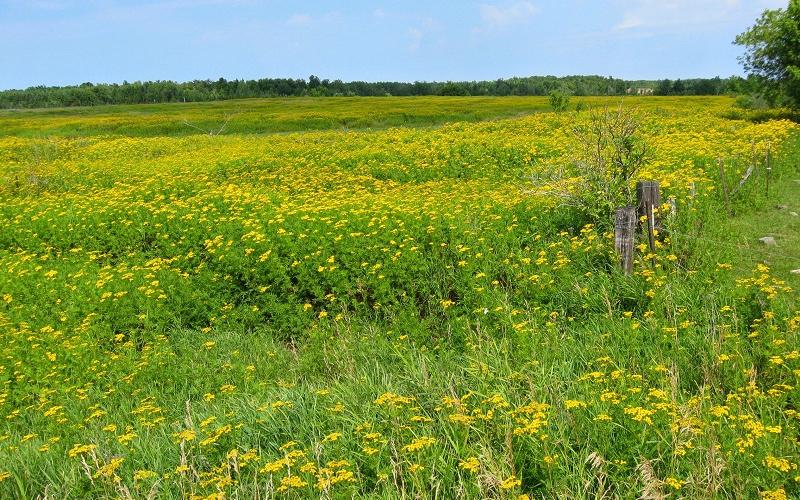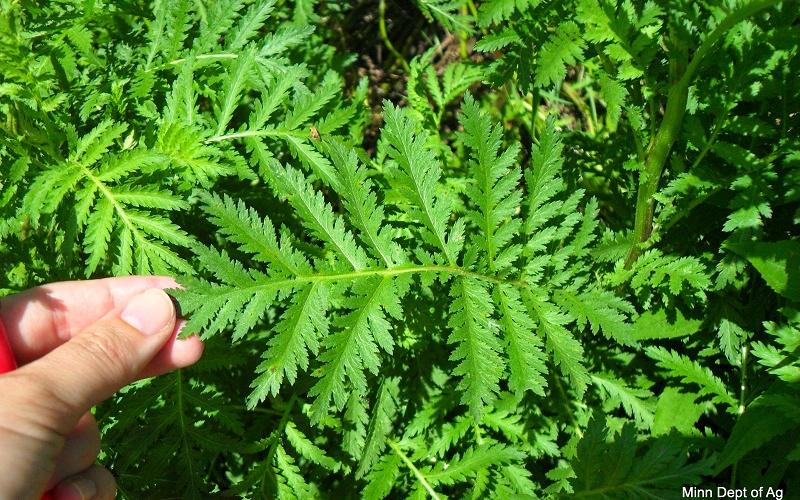Common Name: Common Tansy
Scientific Name: Tanacetum vulgare L.
Legal Status
Efforts must be made to prevent seed maturation and dispersal of plants into new areas. Additionally, no transportation, propagation, or sale of these plants is allowed. Failure to comply may result in enforcement action by the county or local municipality.
Background
Common tansy is native to Eurasia. It was brought to the US in the 1600s as an ornamental plant with medicinal uses. From the east coast, it has naturalized and slowly spread westward over time.
Description
- A perennial plant with multiple stems that grow from a clump, giving the plant a shrub-like appearance.
- Emits a strong odor when plant parts are crushed.
- Grows 3-4 feet tall; can reach 6 feet tall.
- Stems are reddish-brown and support the distinctive alternate leaves that are finely divided with a fern-like appearance.
- Flowers are yellow and button-like, arranged in flat-topped clusters at the stem tips. Flowering occurs mid-July to September.
- Brown seed heads persist until spring.
- Reproduces by both seeds and rhizomes, forming dense stands.
Habitat
Found growing in a wide range of habitats. Typically infests disturbed habitats and is commonly found along roadsides, trails, natural areas, pastures, forest and field margins, mining areas, and unmaintained gravel pits.
Means of spread and distribution
Spreads primarily by rhizomes and seeds. Seeds are lightweight and easily moved by wind, water, wildlife, equipment, etc. Prevalent through the northern half to three-quarters of the state and continues to spread south. The densest populations extend from north-central Minnesota east to Lake Superior and Wisconsin.
Impact
It is highly invasive and therefore can severely reduce pasture capacity and desirable forage. In some instances it can be toxic to livestock if consumed. Common tansy can also degrade wildlife habitat, hinder reforestation and landscape restoration efforts.
Prevention and management
- A sound management plan for common tansy will take a commitment of a couple years to ensure that the population has decreased significantly and is not a serious problem.
- Persistent hand-pulling and digging may be practical on small patches. Removal of rhizomes is crucial to prevent re-sprouting. Regular site check-ups will be required to ensure that re-sprouting and new seedlings are destroyed.
- Mowing before flowering will prevent seed production. Repeated mowing throughout the season is required to keep the plants from re-sprouting and producing seeds. Mowing can be beneficial when used several weeks prior to herbicide applications to increase herbicide contact with re-sprouting foliage.
- Various herbicides have been used successfully. If you plan to use herbicide treatments, check with your local University of Minnesota extension agent, co-op, or landscape care expert for assistance and recommendations. There are several businesses throughout the state with state-certified herbicide applicators that can be hired to perform chemical applications for common tansy and other noxious weed species. Herbicide applications during the late-bud stage of development (late June/early July) have been shown to produce good results. Follow-up treatments in the fall or following spring may be necessary to kill new seedlings or plants unaffected by the initial application.
- Common tansy lifecycle and treatment timing graphic
